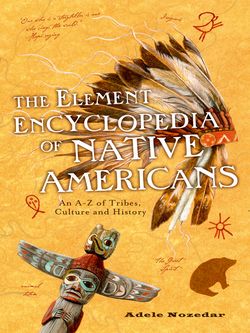Читать книгу The Element Encyclopedia of Native Americans: An A to Z of Tribes, Culture, and History - Adele Nozedar - Страница 39
BANNOCK
ОглавлениеRelated to the northern Paiutes, the Bannock belong to the northern Shoshone people.
Their original stamping ground included southeastern Oregon, southeastern Idaho, western Wyoming, and the southwestern part of Montana. They belong to the Paiute language group.
The Bannock had less trouble in general with the white settlers than other tribes. The tribe traded with other Indian nations, using their pottery, horn utensils, and salmon-skin bags as currency with which to barter. After they adopted the horse in the middle of the 18th century, they traded the animals with the Nez Perce.
The Bannock, as well as other tribes, place a huge amount of importance on the buffalo, not only for food but for all manner of essential items: clothes, implements, tipi coverings, etc. There was another natural resource that was an essential for the Bannock lifestyle: a plant named camas, a purple/blue flower whose bulb was an important form of nutrition, especially in the winter months when little else was available.
In 1868 the Bannock had been removed to the Fort Hall Reservation in Idaho. The rations allotted to them by the U.S. Government were not sufficient to keep the Indians from starvation. In the spring of 1871, the tribe left the reservation to harvest camas roots, but discovered that the settlers had allowed their livestock to roam free in the Great Camas Prairie; there were not enough of the precious tubers left. In addition, it became clear that the numbers of buffalo were rapidly diminishing due to dramatic overhunting by the white men. These two factors forced the Bannock to rebel against the white settlers and the U.S. Government, in an uprising known as the Bannock War, in 1878. The Bannock Chief, Buffalo Horn, made an allegiance with the northern Paiutes; the massed tribes made a series of raids on the white settlers in order to try to find some food. The tribes were defeated by the U.S. Army, and many members of the tribe were captured. After this defeat, they returned to the reservation at Fort Hall in southeastern Idaho.
